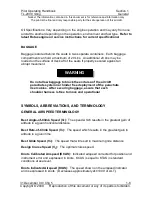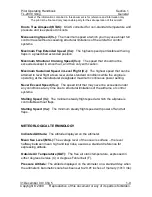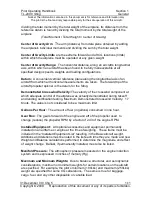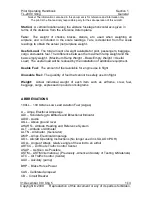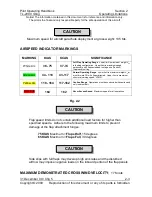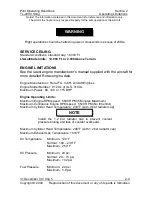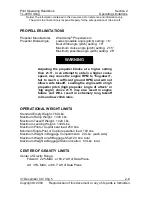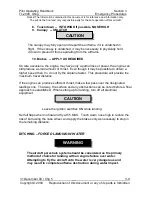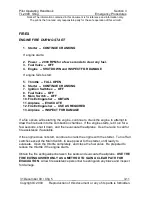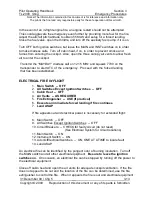
Pilot Operating Handbook
Section 2
TL-2000
Sting
Operating Limitations
Notice! The information contained in this document is for reference and information only.
The pilot is the final and only responsible party for the safe operation of this aircraft.
31 December 09 / Chg 5
2-6
Copyright © 2009 Reproduction of this document or any of its parts is forbidden.
PROPELLER LIMITATIONS
Propeller Manufacturer: Woodcomp
®
Propellers sro
Propeller Blade Angle,
Lowest possible angle (pitch) setting: 16°
Best climb angle (pitch) setting: 18°
Maximum cruise angle (pitch) setting: 21.5°
Maximum possible angle (pitch) setting: 26°
Adjusting the propeller blades at a higher setting
than 21.5°, in an attempt to obtain a higher cruise
speed, may cause the engine RPM to “bog-down”,
fail to reach a sufficient ground RPM, and will not
allow a safe takeoff. Loading the engine with a high
propeller pitch (high propeller ‘angle of attack’ or
‘big angle’) above 21.5° may also result in engine
failure and WILL result in extremely long takeoff
rolls and low climb rates.
OPERATIONAL WEIGHT LIMITS
Standard Empty Weight: 780 Lbs.
Maximum Ramp Weight: 1340 Lbs.
Maximum Takeoff Weight: 1320 Lbs.
Maximum Landing Weight: 1320 Lbs.
Maximum Pilot or Copilot seat load: 250 Lbs.
Minimum Single Pilot or Copilot operation load: 100 Lbs.
Maximum Weight in Baggage Compartments: 20 Lbs. (each side)
Maximum Weight on aft Baggage Shelf: 20 Lbs. total
Maximum Weight at Baggage Station location: 60 Lbs. total.
CENTER OF GRAVITY LIMITS
Center of Gravity Range:
Forward: 22% MAC; or 80.2” Aft of Data Plane
Aft: 35% MAC; or 86.7” Aft of Data Plane
WARNING

